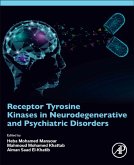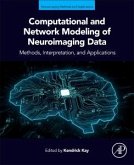Leonard Kranzler (Clinical Professor, Surgery Neurosurgeon, Chi, Aikaterini Panteli (Yeditepe University HospitalA Neurosurgeon
Yasargil Microneurosurgery Study Guide
Books I, II, IIIA, IIIB, IVA, and IVB
Leonard Kranzler (Clinical Professor, Surgery Neurosurgeon, Chi, Aikaterini Panteli (Yeditepe University HospitalA Neurosurgeon
Yasargil Microneurosurgery Study Guide
Books I, II, IIIA, IIIB, IVA, and IVB
- Broschiertes Buch
- Merkliste
- Auf die Merkliste
- Bewerten Bewerten
- Teilen
- Produkt teilen
- Produkterinnerung
- Produkterinnerung
Yasargil Microneurosurgery Study Guide is designed for effective learning and study of the neurosurgical principles contained in seminal microneurosurgery textbooks. From normal microsurgical anatomy to aneurysms, arteriovenous malformations, and CNS tumor microsurgery, this study guide provides a question-and-answer format to knowledge of the background, anatomy, and techniques of microneurosurgery. This work is a practical guide to the application of microneurosurgery to a variety of brain conditions, including intracranial aneurysms, extrinsic and intrinsic tumors, while providing guidance…mehr
Andere Kunden interessierten sich auch für
![The Temporal Lobe The Temporal Lobe]() The Temporal Lobe300,99 €
The Temporal Lobe300,99 €![Migraine Biology, Diagnosis, and Co-Morbidities Migraine Biology, Diagnosis, and Co-Morbidities]() Migraine Biology, Diagnosis, and Co-Morbidities265,99 €
Migraine Biology, Diagnosis, and Co-Morbidities265,99 €![Diseases of the Nervous System Diseases of the Nervous System]() Harald Sontheimer (Harrison Distinguished Professor and Depa ChairDiseases of the Nervous System162,99 €
Harald Sontheimer (Harrison Distinguished Professor and Depa ChairDiseases of the Nervous System162,99 €![Pictorial Atlas of Neuroradiological Signs Pictorial Atlas of Neuroradiological Signs]() Athena Sharifi-Razavi (Neurology DepartmentBou-Ali Sina HospitaPictorial Atlas of Neuroradiological Signs214,99 €
Athena Sharifi-Razavi (Neurology DepartmentBou-Ali Sina HospitaPictorial Atlas of Neuroradiological Signs214,99 €![Receptor Tyrosine Kinases in Neurodegenerative and Psychiatric Disorders Receptor Tyrosine Kinases in Neurodegenerative and Psychiatric Disorders]() Receptor Tyrosine Kinases in Neurodegenerative and Psychiatric Disorders150,99 €
Receptor Tyrosine Kinases in Neurodegenerative and Psychiatric Disorders150,99 €![Mitochondrial Diseases Mitochondrial Diseases]() Mitochondrial Diseases265,99 €
Mitochondrial Diseases265,99 €![Computational and Network Modeling of Neuroimaging Data Computational and Network Modeling of Neuroimaging Data]() Computational and Network Modeling of Neuroimaging Data137,99 €
Computational and Network Modeling of Neuroimaging Data137,99 €-
-
-
Yasargil Microneurosurgery Study Guide is designed for effective learning and study of the neurosurgical principles contained in seminal microneurosurgery textbooks. From normal microsurgical anatomy to aneurysms, arteriovenous malformations, and CNS tumor microsurgery, this study guide provides a question-and-answer format to knowledge of the background, anatomy, and techniques of microneurosurgery. This work is a practical guide to the application of microneurosurgery to a variety of brain conditions, including intracranial aneurysms, extrinsic and intrinsic tumors, while providing guidance on instrumentation and equipment, neuroanesthesia, complications, and more. This practical book is ideal for neurosurgeons, neurologists, neuroanatomists, and other technical experts with a clinical interest in brain microsurgery.
Hinweis: Dieser Artikel kann nur an eine deutsche Lieferadresse ausgeliefert werden.
Hinweis: Dieser Artikel kann nur an eine deutsche Lieferadresse ausgeliefert werden.
Produktdetails
- Produktdetails
- Verlag: Elsevier Science Publishing Co Inc
- Seitenzahl: 406
- Erscheinungstermin: 22. Mai 2023
- Englisch
- Abmessung: 212mm x 278mm x 24mm
- Gewicht: 1106g
- ISBN-13: 9780443186363
- ISBN-10: 0443186367
- Artikelnr.: 66900073
- Herstellerkennzeichnung
- Libri GmbH
- Europaallee 1
- 36244 Bad Hersfeld
- 06621 890
- Verlag: Elsevier Science Publishing Co Inc
- Seitenzahl: 406
- Erscheinungstermin: 22. Mai 2023
- Englisch
- Abmessung: 212mm x 278mm x 24mm
- Gewicht: 1106g
- ISBN-13: 9780443186363
- ISBN-10: 0443186367
- Artikelnr.: 66900073
- Herstellerkennzeichnung
- Libri GmbH
- Europaallee 1
- 36244 Bad Hersfeld
- 06621 890
Dr. Kranzler earned his medical degree from Northwestern University Medical School where he also completed the neurosurgery residence program. He also holds a JD and LLM in Health Law from Loyola University. Since 1974 he has been coordinator of the Chicago Review Course in Neurological Surgery. Author of two books in Neurosurgery, and a deep interest in neurosurgical education, he was clinical professor of surgery (neurosurgery) at the University of Chicago. His clinical interests involve trauma, minimally invasive spine surgery, trigeminal neuralgia, pituitary tumors and pediatric neurosurgery.
I. Microsurgical Anatomy of the Basal Cisterns and Vessels of the Brain, Diagnostic Studies, General Operative Techniques and Pathological Considerations of the Intracranial Aneurysms 1. Operative neurosurgery
2. Diagnostic studies
3. General operative techniques
4. Anesthesia for Microsurgical procedures in Neurosurgery
5. Pathological considerations II. Clinical Considerations, Surgery of the Intracranial Aneurysms and Results 1 Clinical considerations 6. Clinical considerations
7. Internal Carotid Artery Aneurysms
8. Middle Cerebral Artery Aneurysms
9. Anterior Cerebral and Anterior Communicating Artery Aneurysms
10. Vertebrobasilar Aneurysms
11. Giant Intracranial Aneurysms
12. Multiple Aneurysms
13. Unoperated Cases
14. Complications of Aneurysm Surgery
15. Addendum
16. Final Comments III. Arteriovenous Malformation (AVM) of the Brain, History, Embryology, Pathological Considerations, Hemodynamics, Diagnostic Studies, Microsurgical Anatomy 17. History
18. Embryology
19. Pathological considerations
20. Hemodynamics
21. Diagnosis and Follow-up of patients with cerebral AVM using Doppler ultrasound
22. Neuroradiological Evaluation
23. Microsurgical Anatomy of the Brain
24. Cortical Blood Vessels of the Human Brain
25. Anatomy of the Calcarine Sulcus IV. AVM of the Brain, Clinical Considerations, General and Special Operative Techniques, Surgical Results, Nonoperated Cases, Cavernous and Venous Angiomas, Neuroanesthesia 26. Anatomical Location of AVMs from the Surgical Viewpoint
27. Clinical Considerations
28. Surgical Concerns
29. Special Surgical Considerations
30. Summary of Operative Results
31. Children with AVM
32. Nonoperated Patients with AVM
33. Venous, Cavernous and Occult Angiomas
34. Final Comments AVMs
35. Anesthesia in the Surgery of Cerebrovascular Malformations V. CNS Tumors: Surgical Anatomy, Neuropathology, Neuroradiology, Neurophysiology, Clinical Considerations, Operability, Treatment Options 36. Anatomy
37. Neuropathology
38. Neuroradiology
39. Neurophysiology
40. Clinical Considerations - Operability VI. Microsurgery of CNS Tumors: Instrumentation and Equipment, Laboratory Training, Surgical Approaches, Strategies, Tactics and Techniques, Surgery and Results of Extrinsic and Intrinsic Tumors, Interventional Neuroradiology, Neuroanesthesia, Complications 41. Instrumentation and Equipment
42. Laboratory Training
43. Surgical Approaches
44. Strategies, Tactics, and Techniques
45. Acoustic Neurinomas
46. Less Common Neurinomas: Orbital, Oculomotor, Trigeminal, Facial, Glossopharyngeal, Accessory, and Hypoglossal
47. Glomus Jugulare Tumors
48. Meningiomas
49. Hemangiopericytoma
50. Chondromas
51. Chordomas
52. Epidermoid and Dermoid Tumors
53. Intracranial Lipoma
54. Transcranial Surgery for Large Pituitary Adenomas
55. Craniopharyngiomas
56. Optic Gliomas
57. Esthesioneuroblastoma (Olfactory Neuroblastoma)
58. Arachnoid Cysts
59. Neocerebral and Neocerebellar Tumors
60. Limbic and Paralimbic Tumors
61. Midline Tumors (Corpus Callosum, Septum Pellucidum, Basal Ganglia, Diencephalon, and Brainstem)
62. Intraventricular Tumors
63. Pineal Area Tumors
64. Patient Population and Outcome from Individual Glioma Groups
65. Malignant Transformation
66. Embryonal CNS Tumors
67. Primary CNS Non-Hodgkin Lymphoma and Primary Intracranial Sarcoma
68. Germ Cell Tumors
69. Vascular Tumors
70. Cerebral Metastases
71. Interventional Neuroradiology in the Management of CNS Tumors
72. Neuroanesthesia for Microsurgery of CNS Tumors
73. Summary: Whole Series
74. Summary: Childhood Tumors
75. Intra- and Postoperative Complications
76. Final Remarks
2. Diagnostic studies
3. General operative techniques
4. Anesthesia for Microsurgical procedures in Neurosurgery
5. Pathological considerations II. Clinical Considerations, Surgery of the Intracranial Aneurysms and Results 1 Clinical considerations 6. Clinical considerations
7. Internal Carotid Artery Aneurysms
8. Middle Cerebral Artery Aneurysms
9. Anterior Cerebral and Anterior Communicating Artery Aneurysms
10. Vertebrobasilar Aneurysms
11. Giant Intracranial Aneurysms
12. Multiple Aneurysms
13. Unoperated Cases
14. Complications of Aneurysm Surgery
15. Addendum
16. Final Comments III. Arteriovenous Malformation (AVM) of the Brain, History, Embryology, Pathological Considerations, Hemodynamics, Diagnostic Studies, Microsurgical Anatomy 17. History
18. Embryology
19. Pathological considerations
20. Hemodynamics
21. Diagnosis and Follow-up of patients with cerebral AVM using Doppler ultrasound
22. Neuroradiological Evaluation
23. Microsurgical Anatomy of the Brain
24. Cortical Blood Vessels of the Human Brain
25. Anatomy of the Calcarine Sulcus IV. AVM of the Brain, Clinical Considerations, General and Special Operative Techniques, Surgical Results, Nonoperated Cases, Cavernous and Venous Angiomas, Neuroanesthesia 26. Anatomical Location of AVMs from the Surgical Viewpoint
27. Clinical Considerations
28. Surgical Concerns
29. Special Surgical Considerations
30. Summary of Operative Results
31. Children with AVM
32. Nonoperated Patients with AVM
33. Venous, Cavernous and Occult Angiomas
34. Final Comments AVMs
35. Anesthesia in the Surgery of Cerebrovascular Malformations V. CNS Tumors: Surgical Anatomy, Neuropathology, Neuroradiology, Neurophysiology, Clinical Considerations, Operability, Treatment Options 36. Anatomy
37. Neuropathology
38. Neuroradiology
39. Neurophysiology
40. Clinical Considerations - Operability VI. Microsurgery of CNS Tumors: Instrumentation and Equipment, Laboratory Training, Surgical Approaches, Strategies, Tactics and Techniques, Surgery and Results of Extrinsic and Intrinsic Tumors, Interventional Neuroradiology, Neuroanesthesia, Complications 41. Instrumentation and Equipment
42. Laboratory Training
43. Surgical Approaches
44. Strategies, Tactics, and Techniques
45. Acoustic Neurinomas
46. Less Common Neurinomas: Orbital, Oculomotor, Trigeminal, Facial, Glossopharyngeal, Accessory, and Hypoglossal
47. Glomus Jugulare Tumors
48. Meningiomas
49. Hemangiopericytoma
50. Chondromas
51. Chordomas
52. Epidermoid and Dermoid Tumors
53. Intracranial Lipoma
54. Transcranial Surgery for Large Pituitary Adenomas
55. Craniopharyngiomas
56. Optic Gliomas
57. Esthesioneuroblastoma (Olfactory Neuroblastoma)
58. Arachnoid Cysts
59. Neocerebral and Neocerebellar Tumors
60. Limbic and Paralimbic Tumors
61. Midline Tumors (Corpus Callosum, Septum Pellucidum, Basal Ganglia, Diencephalon, and Brainstem)
62. Intraventricular Tumors
63. Pineal Area Tumors
64. Patient Population and Outcome from Individual Glioma Groups
65. Malignant Transformation
66. Embryonal CNS Tumors
67. Primary CNS Non-Hodgkin Lymphoma and Primary Intracranial Sarcoma
68. Germ Cell Tumors
69. Vascular Tumors
70. Cerebral Metastases
71. Interventional Neuroradiology in the Management of CNS Tumors
72. Neuroanesthesia for Microsurgery of CNS Tumors
73. Summary: Whole Series
74. Summary: Childhood Tumors
75. Intra- and Postoperative Complications
76. Final Remarks
I. Microsurgical Anatomy of the Basal Cisterns and Vessels of the Brain, Diagnostic Studies, General Operative Techniques and Pathological Considerations of the Intracranial Aneurysms 1. Operative neurosurgery
2. Diagnostic studies
3. General operative techniques
4. Anesthesia for Microsurgical procedures in Neurosurgery
5. Pathological considerations II. Clinical Considerations, Surgery of the Intracranial Aneurysms and Results 1 Clinical considerations 6. Clinical considerations
7. Internal Carotid Artery Aneurysms
8. Middle Cerebral Artery Aneurysms
9. Anterior Cerebral and Anterior Communicating Artery Aneurysms
10. Vertebrobasilar Aneurysms
11. Giant Intracranial Aneurysms
12. Multiple Aneurysms
13. Unoperated Cases
14. Complications of Aneurysm Surgery
15. Addendum
16. Final Comments III. Arteriovenous Malformation (AVM) of the Brain, History, Embryology, Pathological Considerations, Hemodynamics, Diagnostic Studies, Microsurgical Anatomy 17. History
18. Embryology
19. Pathological considerations
20. Hemodynamics
21. Diagnosis and Follow-up of patients with cerebral AVM using Doppler ultrasound
22. Neuroradiological Evaluation
23. Microsurgical Anatomy of the Brain
24. Cortical Blood Vessels of the Human Brain
25. Anatomy of the Calcarine Sulcus IV. AVM of the Brain, Clinical Considerations, General and Special Operative Techniques, Surgical Results, Nonoperated Cases, Cavernous and Venous Angiomas, Neuroanesthesia 26. Anatomical Location of AVMs from the Surgical Viewpoint
27. Clinical Considerations
28. Surgical Concerns
29. Special Surgical Considerations
30. Summary of Operative Results
31. Children with AVM
32. Nonoperated Patients with AVM
33. Venous, Cavernous and Occult Angiomas
34. Final Comments AVMs
35. Anesthesia in the Surgery of Cerebrovascular Malformations V. CNS Tumors: Surgical Anatomy, Neuropathology, Neuroradiology, Neurophysiology, Clinical Considerations, Operability, Treatment Options 36. Anatomy
37. Neuropathology
38. Neuroradiology
39. Neurophysiology
40. Clinical Considerations - Operability VI. Microsurgery of CNS Tumors: Instrumentation and Equipment, Laboratory Training, Surgical Approaches, Strategies, Tactics and Techniques, Surgery and Results of Extrinsic and Intrinsic Tumors, Interventional Neuroradiology, Neuroanesthesia, Complications 41. Instrumentation and Equipment
42. Laboratory Training
43. Surgical Approaches
44. Strategies, Tactics, and Techniques
45. Acoustic Neurinomas
46. Less Common Neurinomas: Orbital, Oculomotor, Trigeminal, Facial, Glossopharyngeal, Accessory, and Hypoglossal
47. Glomus Jugulare Tumors
48. Meningiomas
49. Hemangiopericytoma
50. Chondromas
51. Chordomas
52. Epidermoid and Dermoid Tumors
53. Intracranial Lipoma
54. Transcranial Surgery for Large Pituitary Adenomas
55. Craniopharyngiomas
56. Optic Gliomas
57. Esthesioneuroblastoma (Olfactory Neuroblastoma)
58. Arachnoid Cysts
59. Neocerebral and Neocerebellar Tumors
60. Limbic and Paralimbic Tumors
61. Midline Tumors (Corpus Callosum, Septum Pellucidum, Basal Ganglia, Diencephalon, and Brainstem)
62. Intraventricular Tumors
63. Pineal Area Tumors
64. Patient Population and Outcome from Individual Glioma Groups
65. Malignant Transformation
66. Embryonal CNS Tumors
67. Primary CNS Non-Hodgkin Lymphoma and Primary Intracranial Sarcoma
68. Germ Cell Tumors
69. Vascular Tumors
70. Cerebral Metastases
71. Interventional Neuroradiology in the Management of CNS Tumors
72. Neuroanesthesia for Microsurgery of CNS Tumors
73. Summary: Whole Series
74. Summary: Childhood Tumors
75. Intra- and Postoperative Complications
76. Final Remarks
2. Diagnostic studies
3. General operative techniques
4. Anesthesia for Microsurgical procedures in Neurosurgery
5. Pathological considerations II. Clinical Considerations, Surgery of the Intracranial Aneurysms and Results 1 Clinical considerations 6. Clinical considerations
7. Internal Carotid Artery Aneurysms
8. Middle Cerebral Artery Aneurysms
9. Anterior Cerebral and Anterior Communicating Artery Aneurysms
10. Vertebrobasilar Aneurysms
11. Giant Intracranial Aneurysms
12. Multiple Aneurysms
13. Unoperated Cases
14. Complications of Aneurysm Surgery
15. Addendum
16. Final Comments III. Arteriovenous Malformation (AVM) of the Brain, History, Embryology, Pathological Considerations, Hemodynamics, Diagnostic Studies, Microsurgical Anatomy 17. History
18. Embryology
19. Pathological considerations
20. Hemodynamics
21. Diagnosis and Follow-up of patients with cerebral AVM using Doppler ultrasound
22. Neuroradiological Evaluation
23. Microsurgical Anatomy of the Brain
24. Cortical Blood Vessels of the Human Brain
25. Anatomy of the Calcarine Sulcus IV. AVM of the Brain, Clinical Considerations, General and Special Operative Techniques, Surgical Results, Nonoperated Cases, Cavernous and Venous Angiomas, Neuroanesthesia 26. Anatomical Location of AVMs from the Surgical Viewpoint
27. Clinical Considerations
28. Surgical Concerns
29. Special Surgical Considerations
30. Summary of Operative Results
31. Children with AVM
32. Nonoperated Patients with AVM
33. Venous, Cavernous and Occult Angiomas
34. Final Comments AVMs
35. Anesthesia in the Surgery of Cerebrovascular Malformations V. CNS Tumors: Surgical Anatomy, Neuropathology, Neuroradiology, Neurophysiology, Clinical Considerations, Operability, Treatment Options 36. Anatomy
37. Neuropathology
38. Neuroradiology
39. Neurophysiology
40. Clinical Considerations - Operability VI. Microsurgery of CNS Tumors: Instrumentation and Equipment, Laboratory Training, Surgical Approaches, Strategies, Tactics and Techniques, Surgery and Results of Extrinsic and Intrinsic Tumors, Interventional Neuroradiology, Neuroanesthesia, Complications 41. Instrumentation and Equipment
42. Laboratory Training
43. Surgical Approaches
44. Strategies, Tactics, and Techniques
45. Acoustic Neurinomas
46. Less Common Neurinomas: Orbital, Oculomotor, Trigeminal, Facial, Glossopharyngeal, Accessory, and Hypoglossal
47. Glomus Jugulare Tumors
48. Meningiomas
49. Hemangiopericytoma
50. Chondromas
51. Chordomas
52. Epidermoid and Dermoid Tumors
53. Intracranial Lipoma
54. Transcranial Surgery for Large Pituitary Adenomas
55. Craniopharyngiomas
56. Optic Gliomas
57. Esthesioneuroblastoma (Olfactory Neuroblastoma)
58. Arachnoid Cysts
59. Neocerebral and Neocerebellar Tumors
60. Limbic and Paralimbic Tumors
61. Midline Tumors (Corpus Callosum, Septum Pellucidum, Basal Ganglia, Diencephalon, and Brainstem)
62. Intraventricular Tumors
63. Pineal Area Tumors
64. Patient Population and Outcome from Individual Glioma Groups
65. Malignant Transformation
66. Embryonal CNS Tumors
67. Primary CNS Non-Hodgkin Lymphoma and Primary Intracranial Sarcoma
68. Germ Cell Tumors
69. Vascular Tumors
70. Cerebral Metastases
71. Interventional Neuroradiology in the Management of CNS Tumors
72. Neuroanesthesia for Microsurgery of CNS Tumors
73. Summary: Whole Series
74. Summary: Childhood Tumors
75. Intra- and Postoperative Complications
76. Final Remarks








